Mount Everest Expedition
The Mount Everest Expedition is the ultimate goal for mountaineers worldwide. Standing at 8,848.86 meters (29,031.7 feet) above sea level, Mount Everest is the highest peak on Earth, located in the Mahalangur Himal sub-range of the Himalayas on the border between Nepal and Tibet. The mountain holds immense cultural significance, regarded as the Mother Goddess, known as Sagarmatha by the Nepalese and Sherpas, and Chomolungma by the Tibetans. Its lofty summit beckons adventurers and mountaineers from around the world, offering a profound challenge and an unparalleled sense of achievement.
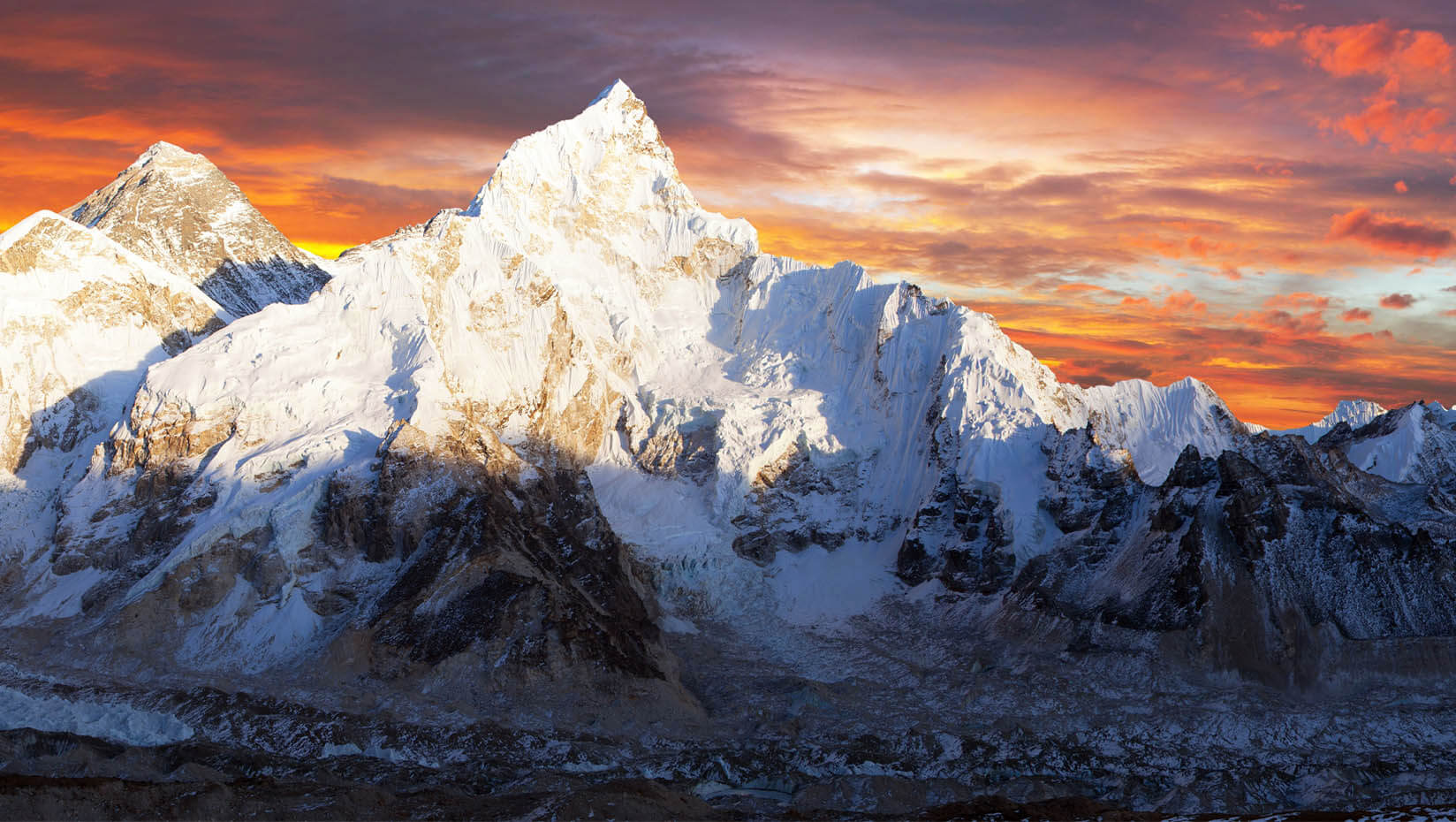
The Everest Expedition is an incredible journey that tests the mettle of even the most seasoned climbers. It is a multi-week endeavor that typically begins with a flight into Lukla, a small mountain town in Nepal. From there, climbers trek to Everest Base Camp, situated at 5,364 meters, acclimatizing to the altitude along the way. The journey takes them through vibrant Sherpa villages, serene monasteries, and stunning natural landscapes. The expedition doesn't truly begin until reaching Everest Base Camp. Here, climbers spend several weeks acclimatizing, performing climbing drills, and preparing for the summit push. This process involves cycling through the camps higher up the mountain to adapt to the increasingly harsh conditions. The ascent from Base Camp to the summit is a complex and dangerous task that requires navigational skill, physical endurance, and mental tenacity. Climbers must cross the treacherous Khumbu Icefall, ascend the steep Lhotse Face, traverse the perilous South Col, and climb the Hillary Step before reaching the summit.
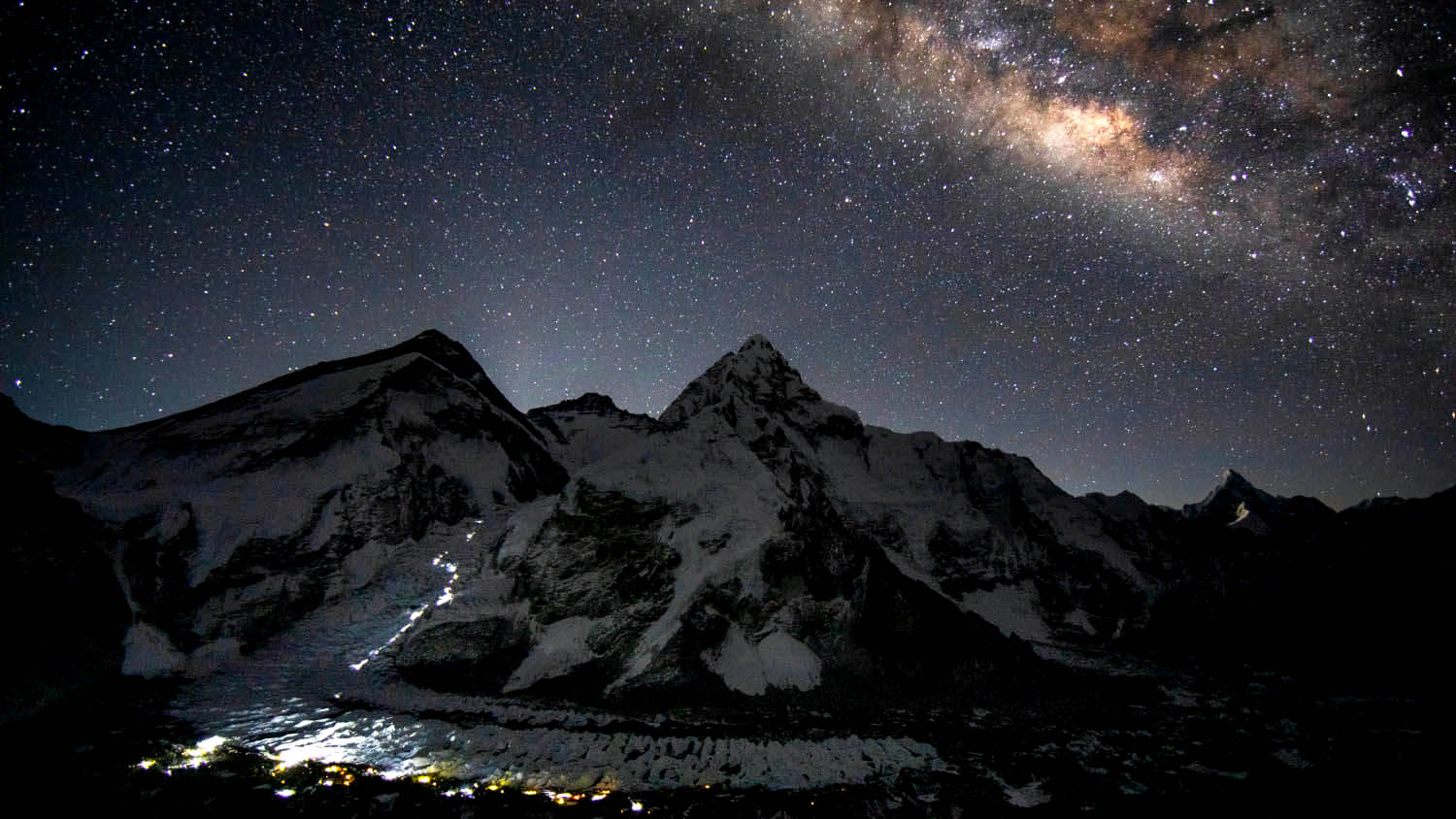
The ascent to the summit of Mount Everest is both physically and mentally demanding. Climbers face multiple threats like severe weather conditions, high altitude sickness, deadly avalanches, and perilous crevasses. Despite the risks, hundreds of adventurers every year push their limits to conquer the 'Roof of the World.' A successful expedition requires rigorous training, professional guidance, high-quality gear, and an indomitable spirit. The glory of standing on top of the world, however, makes all the trials and tribulations worth it. The breathtaking view from the summit and the sense of accomplishment are often described as life-changing experiences by those who have reached the pinnacle of Everest.
History of Mt.Everest Expedition
The history of Mount Everest expeditions is a captivating tale of human determination, bravery, and exploration. The first attempts to conquer Everest were made in the early 1920s, with British expeditions led by George Mallory. Although Mallory and his partner, Andrew Irvine, disappeared during their final ascent in 1924, their efforts ignited a global fascination with the mountain. The breakthrough came in 1953 when Sir Edmund Hillary of New Zealand and Sherpa Tenzing Norgay from Nepal successfully reached the summit, marking the first recorded ascent of Mount Everest. This historic achievement captured the world's attention and opened the door for future expeditions.
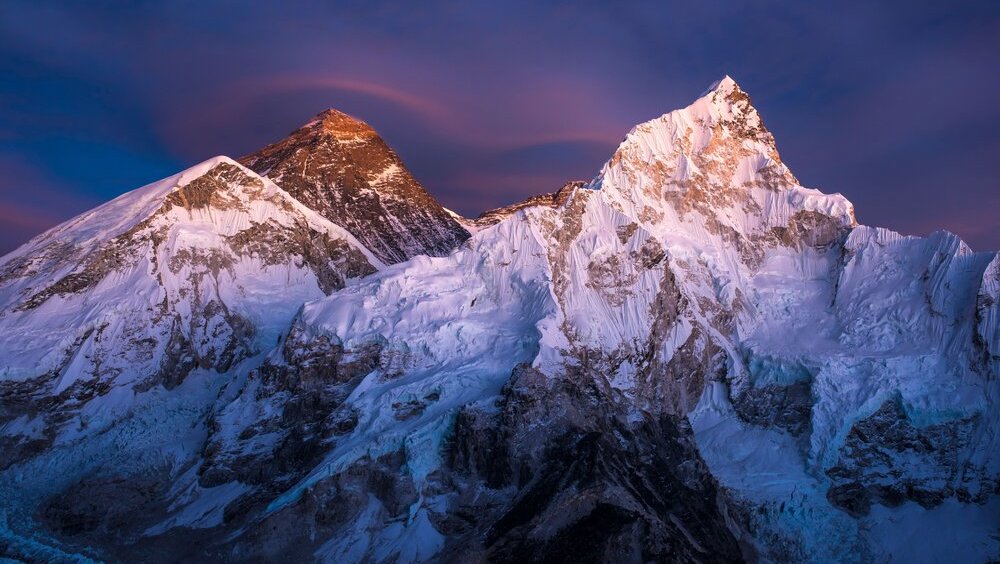
In subsequent years, notable accomplishments included Reinhold Messner's solo ascent without supplemental oxygen in 1980 and Junko Tabei became the first woman to reach the summit in 1975. However, alongside triumphs, Mount Everest has witnessed tragedies, including the deadly events of 1996. Despite these challenges, commercial expeditions have flourished in recent times, providing opportunities for climbers of varying experience levels. Today, ascending Everest remains a remarkable feat that requires meticulous planning, physical preparation, and respect for the mountain's unforgiving nature. The legacy of Everest expeditions is a testament to the indomitable spirit of human exploration and the pursuit of extraordinary achievements.
Highlights of the Mt.Everest Expedition
- Reaching the iconic summit of Mt. Everest, the highest peak on Earth.
- Spectacular views of the Himalayan mountain range and breathtaking landscapes.
- Immersion in the rich Sherpa culture and interaction with local communities.
- Trekking to Everest Base Camp, passing through picturesque villages and scenic trails.
- Overcoming physical and mental challenges, including altitude sickness and extreme weather.
- Building strong bonds and camaraderie with fellow climbers and team members.
- Personal growth and self-discovery through testing limits and pushing boundaries.
- A profound sense of accomplishment and fulfillment upon completing the expedition.
- Experiencing the beauty and grandeur of the Khumbu region.
- Gaining insights into Sherpa traditions and visiting monasteries along the way.
- An adventure that inspires and empowers, leaving a lasting impact on participants' lives.
Routes for the Mt.Everest Expedition
There are several routes that climbers can take during a Mount Everest expedition, each with its own characteristics and challenges. Here are the main routes commonly used:
South Col Route (Southeast Ridge)
Base Camp (5,364 meters/17,598 feet): The expedition begins in Nepal at Everest Base Camp in the Khumbu Valley. Climbers spend time acclimatizing and preparing for the ascent.
Khumbu Icefall: From Base Camp, climbers navigate the treacherous Khumbu Icefall, which consists of shifting ice towers, deep crevasses, and seracs. Fixed ropes and ladders are used to cross this challenging terrain.
Western Cwm: After crossing the Khumbu Icefall, climbers enter the Western Cwm, a wide and relatively flat valley. This section involves traversing snow and ice fields while dealing with strong winds and intense sunlight.
Lhotse Face: Ascending further, climbers encounter the steep and icy Lhotse Face. Fixed ropes are used to ascend this section, which requires technical skills and careful footwork.
South Col (7,906 meters/25,938 feet): At Camp 4, located at the South Col, climbers rest and acclimatize before the final push to the summit. This is the last camp before the summit.
Hillary Step: Just below the summit, climbers face the Hillary Step, a steep and exposed rock face. This section often requires the use of fixed ropes and demands careful navigation.
Summit Ridge: After conquering the Hillary Step, climbers reach the summit ridge, a narrow and exposed section leading to the summit. Strong winds and extreme temperatures are common here.
Summit (8,848 meters/29,029 feet): The final stretch takes climbers to the summit of Mount Everest, where they can enjoy breathtaking views and a sense of accomplishment.

North Col Route (Northeast Ridge)
Base Camp: The expedition begins from the Tibet side at the Rongbuk Base Camp, situated at an elevation of 5,180 meters/16,994 feet.
Advanced Base Camp (ABC): Climbers establish ABC at around 6,400 meters/21,000 feet. From there, they ascend through several camps, including the North Col, Camps 1, 2, and 3.
First, Second, and Third Steps: These are challenging sections on the Northeast Ridge, featuring steep rock faces that require careful climbing and the use of fixed ropes.
Summit Pyramid: Climbers navigate the final section, known as the Summit Pyramid, which includes a mixture of rock and snow before reaching the summit.
Summit: Finally, climbers reach the summit of Mount Everest, experiencing the awe-inspiring views and a sense of triumph.
West Ridge Route: This is a less frequently used route that starts from the Tibetan side. It involves ascending the West Ridge from Advanced Base Camp and navigating technical terrain and exposed ridges. The route merges with the North Col Route at Camp 3, and climbers proceed to the summit from there.
Hornbein Couloir Route: This is one of the most challenging and less commonly attempted routes on Mount Everest. It follows the West Ridge but diverges towards the Hornbein Couloir, a steep and narrow gully on the mountain's northwest face. Climbers face significant technical difficulties and high avalanche risk on this route.
It's important to note that the South Col Route from the Nepalese side is the most accessible and popular option for commercial expeditions. However, climbers must obtain the necessary permits and follow regulations set by the respective countries (Nepal and China/Tibet) for their chosen route. Additionally, climbers should carefully evaluate their experience, skills, and personal goals when choosing a route, as different routes have varying levels of difficulty and risks associated with them.
Mountain views seen during the Mt.Everest Expedition
During a Mount Everest expedition, climbers are treated to breathtaking mountain views of the surrounding Himalayan peaks. Here are some notable mountain views that can be experienced along the journey:
Ama Dablam: This stunning peak, located in the Everest region, is often referred to as the "Matterhorn of the Himalayas." Its distinctive pyramid shape and impressive ridges make it a prominent feature of the landscape.
Lhotse: As the fourth highest mountain in the world, Lhotse is an impressive sight along the Everest expedition route. Its towering presence and glaciated slopes offer a dramatic backdrop to the climbing experience.
Nuptse: Situated in the Khumbu region, Nuptse is known for its steep and jagged ridges. It forms a spectacular amphitheater along the Everest Base Camp trek, showcasing its grandeur to climbers.
Makalu: As the fifth highest mountain globally, Makalu offers a majestic view from the Everest region. Its pyramid-shaped peak, sharp ridges, and snow-covered slopes add to the awe-inspiring panorama.
Cho Oyu: Located on the Nepal-China border, Cho Oyu is the sixth-highest mountain in the world. Its massive ice-covered summit and glacial valleys provide a captivating sight during the Everest expedition.
Pumori: Towering over the Khumbu Valley, Pumori's dramatic pyramid-shaped peak is visible throughout the journey. Its pristine snow slopes and striking presence enhance the scenic beauty of the region.
Everest Massif: Of course, the highlight of the expedition is the sight of the Everest Massif itself. Gazing upon the majestic summit of Mount Everest, with its awe-inspiring presence and iconic triangular shape, is an unforgettable experience for climbers.
These are just a few of the many breathtaking mountain views that can be witnessed during a Mount Everest expedition. The entire region is blessed with an array of majestic peaks, creating a stunning backdrop and immersing climbers in the natural splendor of the Himalayas.
How Difficult is the Mt.Everest Expedition?
The climb of Mount Everest is considered one of the most challenging and demanding mountaineering expeditions in the world. Several factors contribute to the difficulty of climbing Mount Everest:
Extreme altitude
The extreme altitude of Mount Everest poses significant challenges for climbers. The thin air at high elevations means less oxygen is available, leading to altitude sickness. The area above 8,000 meters is called the death zone, where oxygen levels are drastically reduced, increasing the risk of conditions like high-altitude cerebral edema. Acclimatization is crucial to allow the body to adjust to the altitude gradually. Climbers often use supplementary oxygen to maintain oxygen levels. Close monitoring of health and making informed decisions are essential for a successful ascent. Fitness, mental preparation, and mountaineering skills are vital to tackle the demanding conditions.
Harsh weather conditions
The weather conditions on Mount Everest can be extremely harsh and unpredictable. Climbers face freezing temperatures, high winds, and intense storms. With temperatures dropping well below freezing and wind speeds reaching hurricane-like velocities, climbers are at risk of frostbite, hypothermia, and accidents. Rapid weather changes, including sudden storms and reduced visibility, require climbers to be adaptable and make quick decisions to ensure their safety. The wind chill factor further exacerbates the cold and increases the risk of heat loss. Climbers must be well-prepared with appropriate clothing, gear, and knowledge to navigate these challenging weather conditions. Monitoring weather forecasts and making informed decisions are crucial for a safe ascent.
Technical challenges
Climbing Mount Everest entails numerous technical challenges that require advanced mountaineering skills. The route involves steep and icy terrain, including treacherous icefalls, snowy slopes, crevasses, and rocky sections. Climbers must possess expertise in rope handling, ice climbing, and glacier travel techniques. They need to use specialized equipment like crampons and ice axes to maintain stability and traction. Route finding, assessing conditions, and making informed decisions is vital for success. Mastery of these technical skills is essential for navigating the ever-changing and demanding landscapes encountered on the climb to Mount Everest's summit.
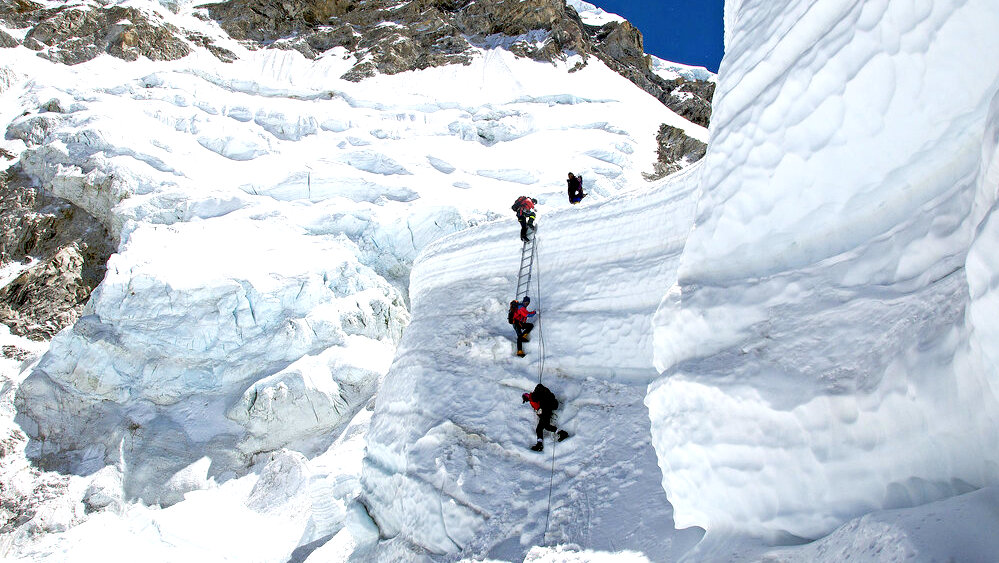
The long duration of the expedition
The expedition to climb Mount Everest is known for its long duration, spanning several weeks. This is necessary to allow climbers to acclimatize to the high altitude gradually, reducing the risk of altitude sickness. The journey involves multiple rotations between base camp and higher camps, progressively climbing higher each time. Factors like weather conditions and the climbers' fitness influence the duration. The extended expedition requires maintaining physical fitness, managing energy levels, and staying mentally focused. Living in remote and challenging environments with limited facilities adds to the logistical complexity. Patience, endurance, and careful resource management are essential for a safe and successful ascent of Mount Everest.
It's important to note that climbing Mount Everest should only be attempted by experienced climbers who have undergone proper training, have sufficient high-altitude mountaineering experience, and are physically and mentally prepared for the demanding conditions. Successful climbs require careful planning, teamwork, support from experienced guides and Sherpas, and a comprehensive understanding of the risks involved.
Prepare for the Everest Expedition
Preparing for an Everest Expedition is an arduous and complex endeavor that requires careful planning and thorough preparation. To start, focus on building your physical fitness through regular aerobic exercises and strength training. Acquire high-altitude experience by undertaking other treks or peaks to acclimatize your body and understand the challenges of thin air. It is crucial to develop mountaineering skills such as glacier travel, crevasse rescue, and ice climbing, and to acquire the necessary equipment and gear. Mental preparation is equally important, as you need to cultivate mental resilience, determination, and the ability to cope with potential setbacks. Arrange the logistics of your expedition well in advance, including obtaining the required permits and organizing accommodations, food, and transportation. Proper nutrition and hydration, as well as a comprehensive understanding of safety protocols and risk management, are essential. Joining a reputable expedition team or hiring experienced guides and Sherpas will provide crucial support and guidance. Additionally, undergo a thorough medical evaluation to assess your physical and mental health suitability for the expedition. Remember, an Everest Expedition is a monumental undertaking, and adequate preparation, training, and support are paramount to ensuring a safe and successful journey.
Permits for the Mt.Everest Expedition
To undertake a Mount Everest expedition, climbers are required to obtain various permits and licenses. The specific permits depend on the route chosen and the country from which the expedition is organized. Here are the main permits needed for a typical Mount Everest expedition:
Climbing Permit: This is the primary permit required for climbing Mount Everest. In Nepal, climbers need to obtain a climbing permit issued by the Nepal Mountaineering Association (NMA) or the Ministry of Tourism. The permit fee varies depending on the season and the number of climbers on the team. The permit is usually obtained through an authorized expedition operator who handles the paperwork on behalf of the climbers.
Sagarmatha National Park Permit: Mount Everest is located within the Sagarmatha National Park in Nepal. Therefore, climbers are required to obtain a Sagarmatha National Park Permit. This permit is issued by the Department of National Parks and Wildlife Conservation and helps support conservation efforts in the region.
TIMS Card: The Trekker's Information Management System (TIMS) card is necessary for trekkers and climbers in Nepal. It is a registration card that provides details about the individual's trekking route, duration, and emergency contacts. Climbers must obtain the appropriate TIMS card (Green for individual trekkers, Blue for organized trekkers) before starting their expedition.
Tibet Travel Permit: If climbing from the Tibetan side, climbers need to obtain a Tibet Travel Permit from the Tibet Tourism Bureau. This permit is required for traveling in the Tibet Autonomous Region of China and is typically arranged through a licensed Tibetan travel agency.
It's important to note that these permits are subject to specific regulations and guidelines set by the respective authorities. Climbers should work with a reputable expedition operator or agency that can assist in obtaining the necessary permits and ensure compliance with all legal requirements. Additionally, climbers must carry their permits at all times during the expedition and be prepared to present them for inspection at various checkpoints along the route.
Best Season For Mt.Everest Expedition
The best season for a Mount Everest expedition typically depends on the route chosen and the climber's preferences. However, the two primary climbing seasons are the pre-monsoon (spring) season and the post-monsoon (autumn) season. Here are the details of each season for a Mount Everest expedition:
Spring Season (April-May)
The spring season is widely regarded as the best time for Mt. Everest Expedition. During this season, the weather is generally more stable and predictable. The skies are clearer, offering excellent visibility and breathtaking panoramic views of the surrounding mountains. The temperatures are relatively milder, making the climbing conditions more comfortable. The days are longer, providing more daylight hours for the ascent and descent. Additionally, the winds are typically lighter compared to other seasons, reducing the risk of strong gusts. These favorable weather conditions, combined with the gradual thawing of snow and ice, make the spring season the preferred choice for many climbers attempting to summit Mt. Everest.
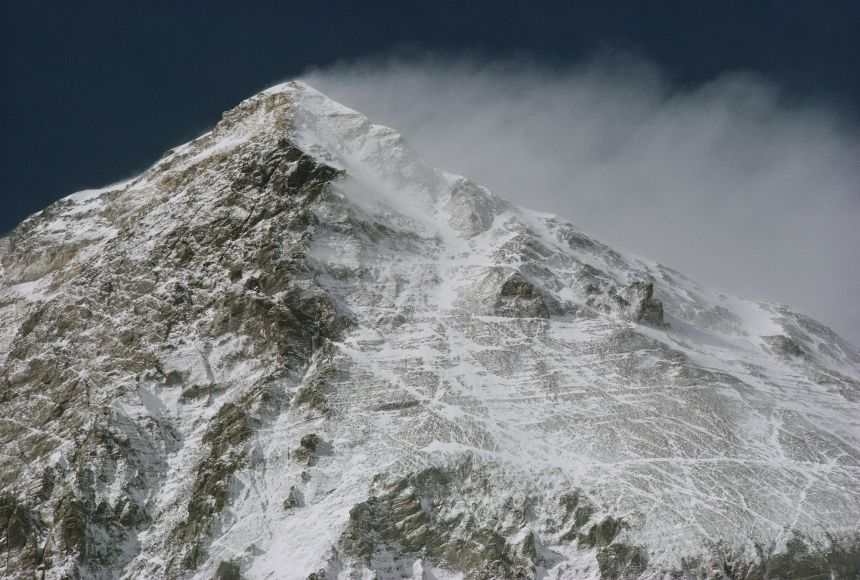
Base Camp: Daytime temperatures at Base Camp during the spring season can range from -5°C to 10°C (23°F to 50°F). Nighttime temperatures at Base Camp often drop below freezing, ranging from -15°C to -5°C (5°F to 23°F) or lower.
High Camp: As you ascend to higher camps, such as Camp 2 (6,400 meters/21,000 feet) or Camp 3 (7,470 meters/24,500 feet), temperatures can range from -15°C to -25°C (5°F to -13°F) or even lower. At Camp 4 (7,950 meters/26,085 feet), temperatures can plummet to extreme lows, often reaching -30°C (-22°F) or below.
Summer Season (June-August)
The summer season, also known as the monsoon season, brings heavy rainfall and unstable weather conditions to the Mt. Everest region. Consequently, this season is generally not recommended for Mt. Everest Expedition. The monsoon rains result in poor visibility, increased cloud cover, and a higher risk of avalanches and landslides. The trails and climbing routes become slippery and treacherous, posing additional challenges for climbers. However, some individuals with specialized skills and experience may choose to attempt the climb during the summer season, although it is considered more challenging and risky.
Base Camp: Daytime temperatures at Base Camp during the summer/monsoon season can range from 5°C to 20°C (41°F to 68°F). Nighttime temperatures at Base Camp generally range from 0°C to 10°C (32°F to 50°F).
High Camp: The temperatures at higher camps during the summer season follow a similar pattern as other seasons. As you ascend, the temperatures become colder. At higher camps like Camp 2 or Camp 3, temperatures can range from -15°C to -25°C (5°F to -13°F) or even lower. At Camp 4, temperatures can reach extreme lows of -30°C (-22°F) or below.
Autumn Season (September-November)
The autumn season is the second most popular time for Mt. Everest Expedition. The weather during this season is generally stable, with clear skies and lower chances of precipitation. The temperatures are colder compared to spring, especially at higher altitudes, but still manageable for climbing. The winds can be stronger, particularly at the higher elevations, but they are typically not extreme. The days are slightly shorter compared to spring, but still provide ample daylight for climbing activities. The autumn season offers the advantage of fewer crowds on the mountain compared to spring, allowing for a more serene and intimate climbing experience.
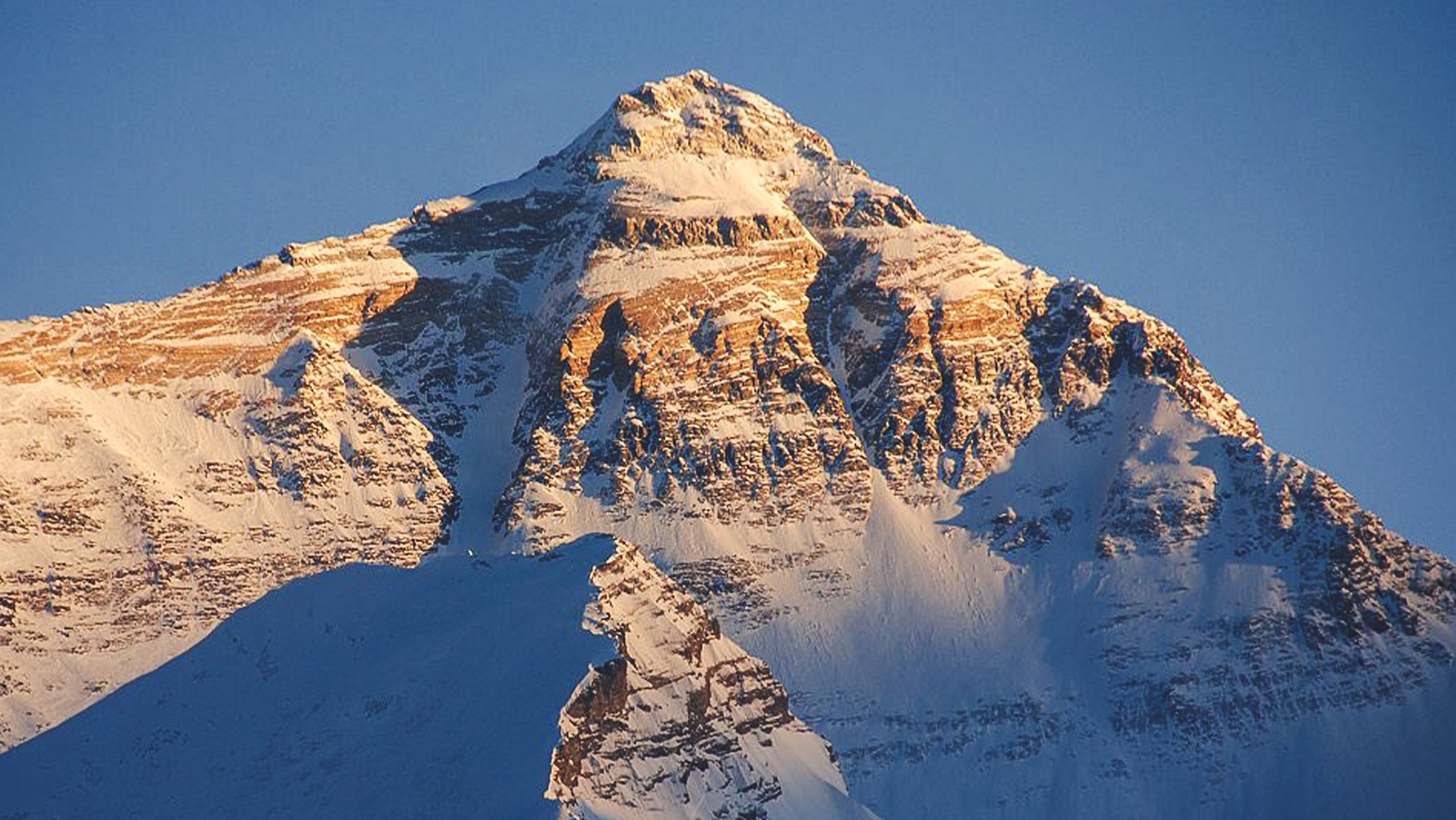
Base Camp: Daytime temperatures at Base Camp during the autumn season range from -5°C to 10°C (23°F to 50°F). Nighttime temperatures at Base Camp can drop below freezing, ranging from -15°C to -5°C (5°F to 23°F) or lower.
High Camp: The temperature ranges at higher camps during the autumn season are similar to other seasons. As you ascend, temperatures become colder. At Camp 2 or Camp 3, temperatures can range from -15°C to -25°C (5°F to -13°F) or even lower. At Camp 4, temperatures can reach extreme lows of -30°C (-22°F) or below.
Winter Season (December-February)
The winter season on Mt. Everest is characterized by extreme cold, harsh weather conditions, and substantial snowfall. The temperatures drop significantly, especially at higher elevations, making it extremely challenging for climbers. The strong winds create a severe wind chill factor, further intensifying the cold. The climbing routes become heavily snow-covered and more technically demanding. The risks associated with climbing Mt. Everest during winter are substantial, and it is considered suitable only for highly experienced climbers with specialized skills and knowledge of extreme cold-weather mountaineering.
Base Camp: Daytime temperatures at Base Camp during the winter season range from -10°C to 5°C (14°F to 41°F). Nighttime temperatures at Base Camp often drop below freezing, ranging from -25°C to -10°C (-13°F to 14°F) or lower.
High Camp: At higher camps during winter, temperatures are extremely cold. Camps like Camp 2 or Camp 3 can experience temperatures ranging from -20°C to -30°C (-4°F to -22°F) or even lower. At Camp 4, temperatures can drop to bone-chilling lows below -30°C (-22°F).
It's important to note that weather conditions on Mount Everest can be unpredictable and can vary from year to year, even within the same season. Climbers should always be prepared for sudden changes in weather, including storms and high winds, which can pose significant risks. Proper acclimatization, physical fitness, and mountaineering experience are essential regardless of the chosen season.
Accommodation and Meals During The Mt.Everest Expedition
Accommodations and meals during the Mt. Everest Expeditions can vary depending on the specific expedition and the chosen route. Here's an overview of what to expect:
Accommodation
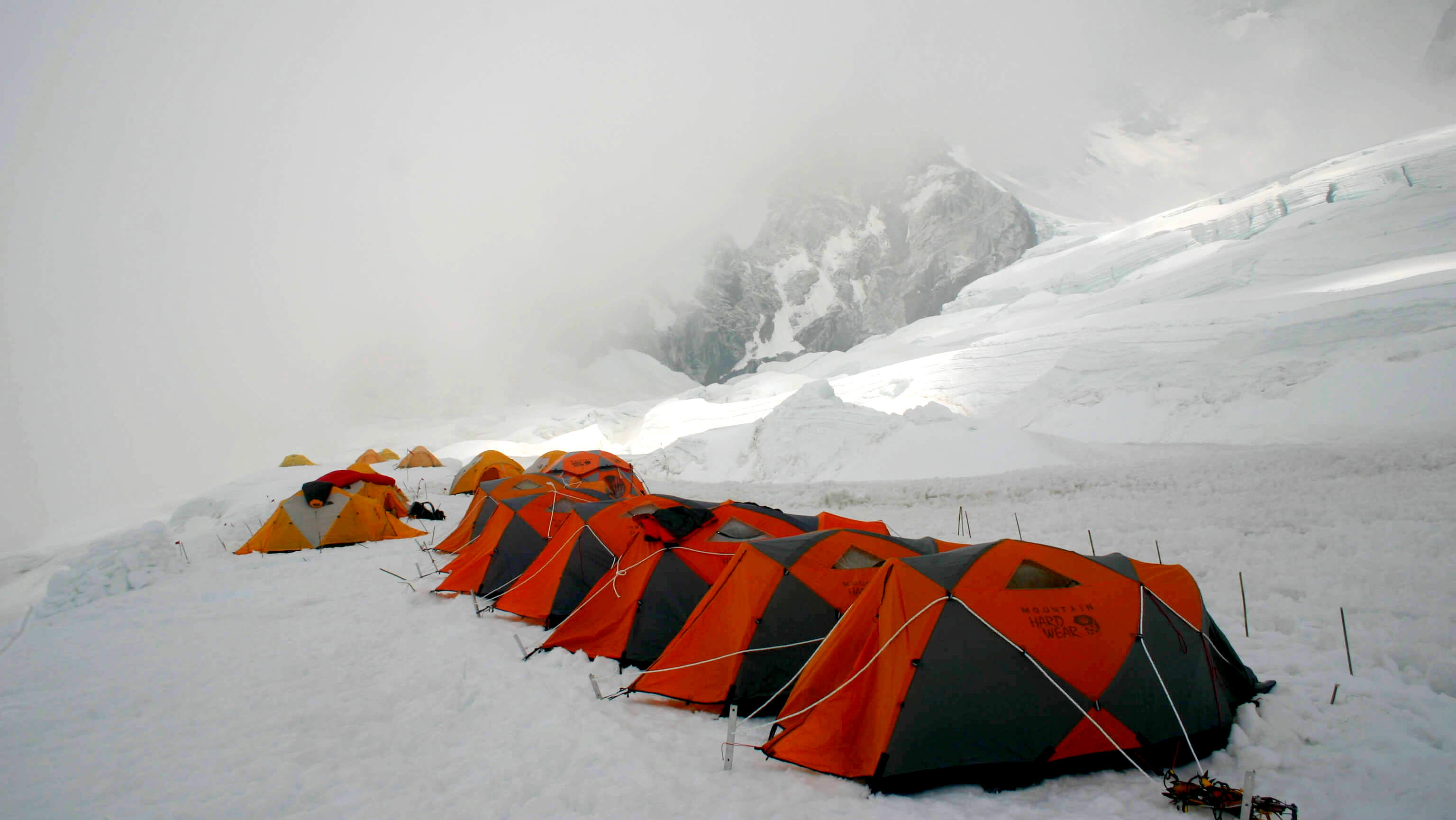
Base Camp: At Everest Base Camp, climbers typically set up their own temporary camps using tents. These camps serve as the base of operations for the expedition. The tents are equipped with sleeping mats or cots to provide some comfort.
Higher Camps: As climbers progress higher on the mountain, they establish a series of higher camps at strategic locations along the climbing route. Accommodations at these camps consist of smaller and more basic tents. Climbers may need to share tents with their climbing partners or teammates. These camps are designed to provide shelter and protection from the elements.
High-altitude Tents: As climbers approach the upper reaches of Everest, such as the South Col and the Balcony, they may have specialized high-altitude tents or bivouacs. These are lightweight and designed to withstand extreme conditions. High-altitude tents are compact and provide minimal shelter, prioritizing functionality and weight-saving.
Teahouses/Lodges: Along the trekking route to Everest Base Camp, there are teahouses and lodges available in villages such as Namche Bazaar, Tengboche, Dingboche, and Lobuche. These establishments offer basic accommodation in the form of small rooms with beds or dormitory-style accommodations. Facilities may include shared bathrooms, communal dining areas, and limited amenities.
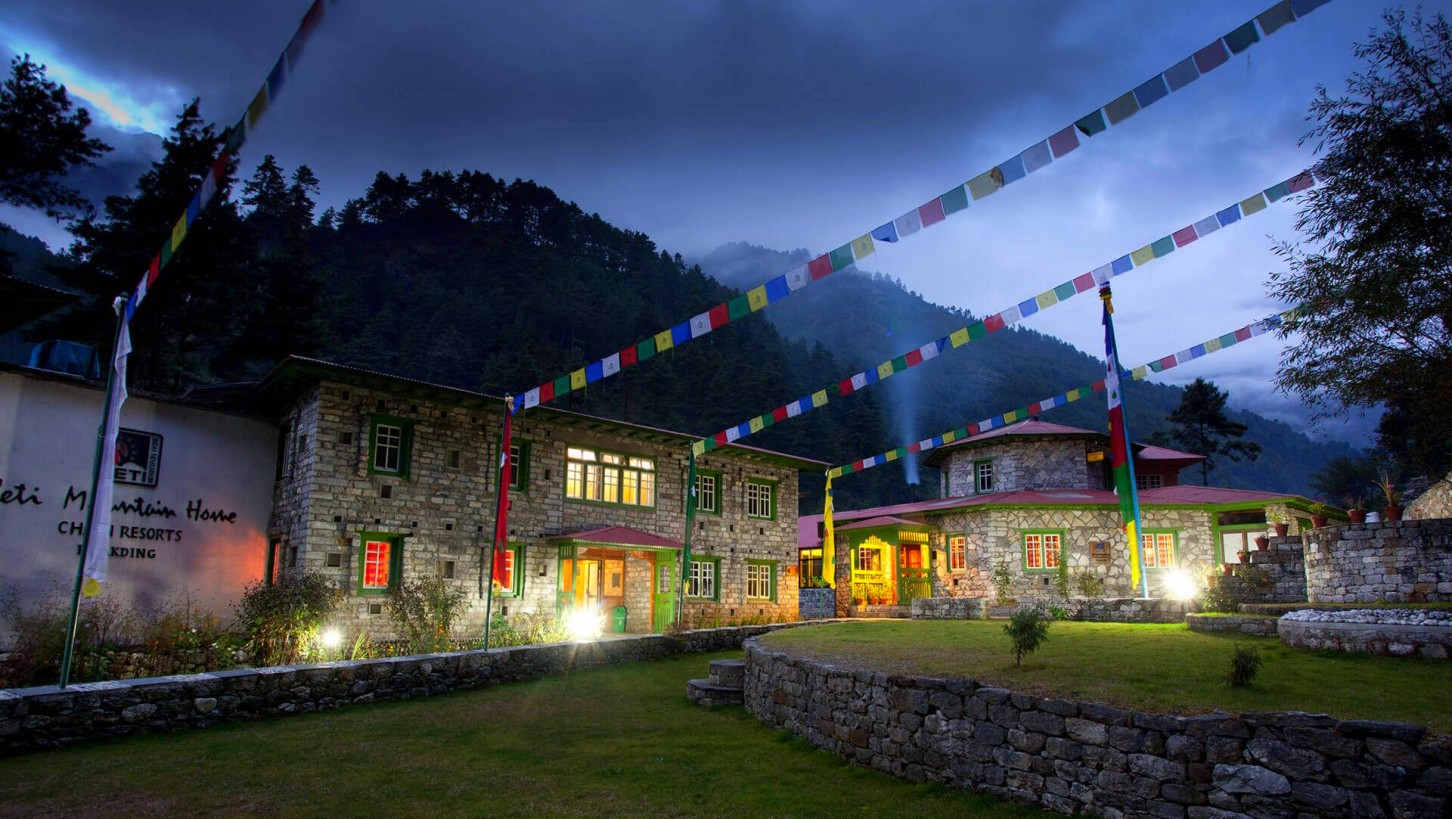
Meals

Base Camp: At Everest Base Camp, climbers typically have a team of cooks who prepare meals for the entire expedition. The meals are designed to provide a balance of carbohydrates, proteins, and essential nutrients to support the climbers' energy needs. The menu at base camp is relatively diverse and may include dishes such as rice, pasta, potatoes, vegetables, soups, stews, bread, eggs, meat, and canned or dried fruits.
Higher Camps: As climbers progress to higher camps, the emphasis is on providing lightweight, compact, and easily prepared meals. Freeze-dried and dehydrated meals are commonly used at higher camps. These meals are lightweight, easy to carry, and only require boiling water for preparation. They come in various flavors and contain a mix of carbohydrates, proteins, and fats.
High-altitude Food and Supplements: As climbers reach the highest camps and the summit push, they rely on pre-packaged high-altitude food and energy supplements. These items are specially formulated to provide maximum nutrition in a lightweight and compact form. They often include energy bars, gels, powdered drinks, and snacks rich in calories and nutrients to sustain climbers during the final stages of the ascent.
It's important to note that the availability and variety of meals decrease as climbers ascend higher on the mountain due to the extreme conditions and limited resources. Personal preferences and dietary restrictions should be communicated to the expedition organizers in advance. Additionally, climbers often bring their own snacks and supplements to supplement the provided meals and cater to their individual needs.
Accommodation and meals during the Mt. Everest Expedition prioritize functionality, safety, and nutrition in the challenging and remote environment of the mountain.
Travel Insurance for the Everest Expedition
Obtaining comprehensive travel insurance is essential when planning an Everest Expedition due to the high-risk nature of the climb. Here are some important points to consider regarding travel insurance for the Everest Expedition:
Mountaineering Coverage: Ensure that your travel insurance policy specifically covers mountaineering activities, including high-altitude climbing. Standard travel insurance may not include coverage for such high-risk activities, so it is crucial to check the policy details and confirm the inclusion of mountaineering coverage.
Emergency Medical Expenses: Make sure your travel insurance provides coverage for emergency medical expenses, including medical evacuation and rescue costs. In the event of altitude sickness, injuries, or other medical emergencies, adequate coverage is vital for timely and effective medical assistance.
Trip Cancellation or Interruption: Look for coverage that includes trip cancellation or interruption, as unforeseen circumstances or emergencies could disrupt your expedition plans. This coverage can help reimburse non-refundable expenses if you are unable to start or complete the climb due to covered reasons.
Personal Belongings and Equipment: Protect your personal belongings and expensive mountaineering equipment by selecting a policy that provides coverage for loss, theft, or damage during the expedition. This coverage can include equipment such as climbing gear, cameras, and other valuable items.
Emergency Assistance and Support: Confirm that your travel insurance offers 24/7 emergency assistance services. In case of any unforeseen events or emergencies during the expedition, having access to emergency support can be invaluable. This assistance can provide guidance, coordinate rescue efforts, and offer vital support in critical situations.
Policy Exclusions and Limitations: Carefully review the policy exclusions and limitations to understand what is covered and what is not. Common exclusions may include pre-existing medical conditions, reckless behavior, and engaging in unauthorized mountaineering activities. Be aware of these limitations and ensure you comply with the policy requirements.
It is essential to read the policy details, understand the coverage, and select a reputable insurance provider that specializes in adventure travel or mountaineering expeditions. Consider consulting with an insurance agent or company to discuss your specific needs and ensure you have adequate coverage for the Everest Expedition. Keep in mind that the risks associated with climbing Everest are significant, and comprehensive travel insurance provides a necessary layer of protection and peace of mind throughout the journey.
Checklist for the Mt.Everest Expedition
Preparing for the Mt. Everest Expedition requires careful planning and attention to detail. Here's a checklist to help you get started:
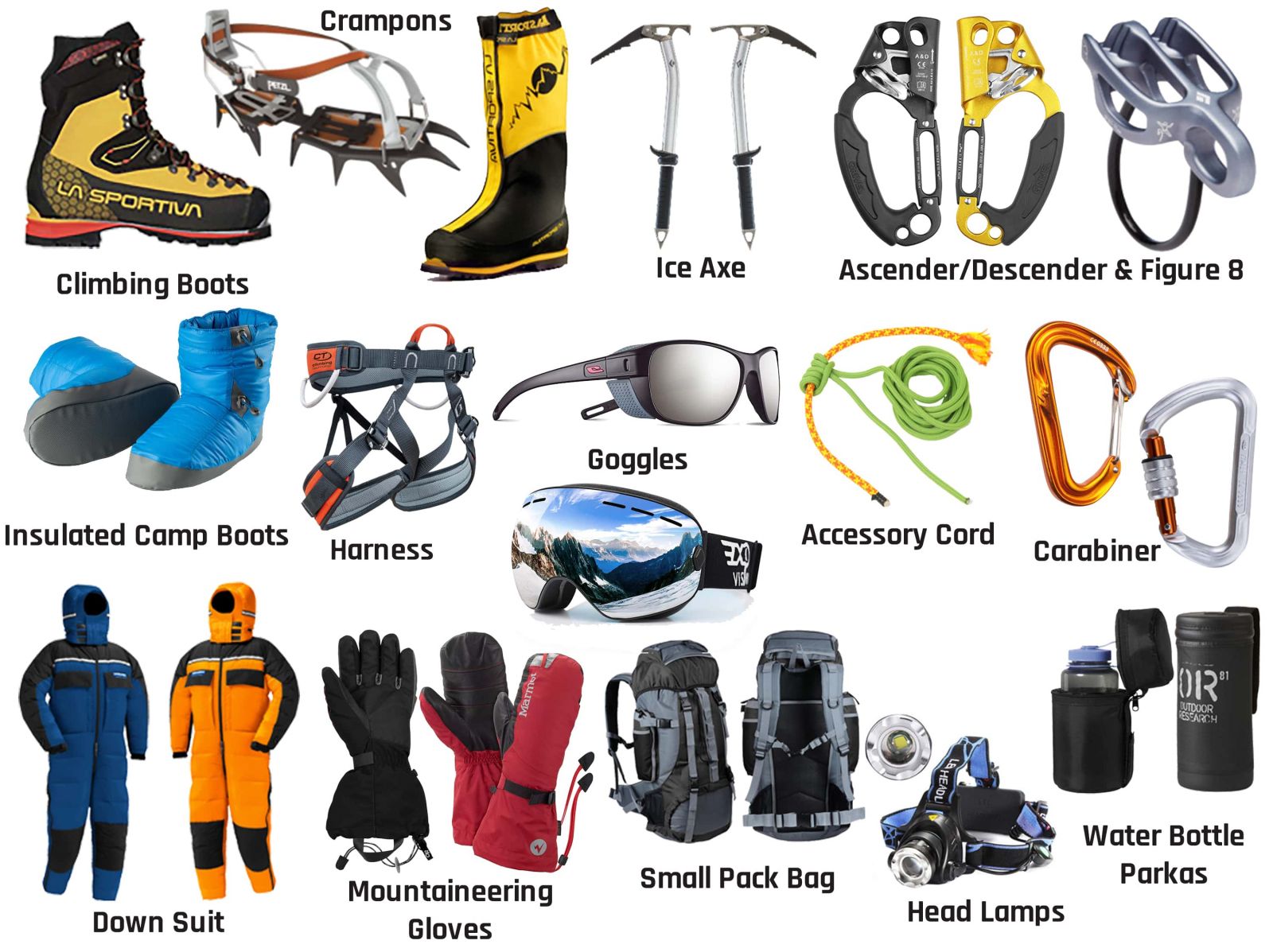
Physical Fitness
- Consult with a physician and undergo a thorough medical examination to ensure you are in good health and able to handle the physical demands of the expedition.
- Follow a comprehensive training program that includes cardiovascular exercises, strength training, and endurance activities to prepare your body for the rigors of high-altitude climbing.
Climbing Gear
- Mountaineering boots are designed for high-altitude climbing and are compatible with crampons.
- Crampons for traction on icy surfaces.
- Ice axe for self-arrest and stability.
- Harness and carabiners for safety during roped sections.
- Helmet for protection against falling objects.
- Climbing ropes and slings for safety and roped sections.
- Ascenders and descenders for ascending and descending ropes.
- Mountaineering backpack with proper capacity and durability.
- Sleeping bag rated for extremely cold temperatures.
- Insulated sleeping pad for insulation from the ground.
- Lightweight and durable tent suitable for high-altitude conditions.
- Headlamp with extra batteries for visibility during night climbs.
- Trekking poles for stability and support during long treks.
- Sunglasses with UV protection and suitable for high-altitude glare.
- Personal climbing gear and equipment should be chosen based on personal preferences, the specific route, and recommendations from experienced climbers or expedition guides.
Clothing
- Base layers (tops and bottoms) are made of moisture-wicking material.
- Insulating layers, such as fleece or down jackets, trap warmth.
- Waterproof and breathable outer shell jacket and pants.
- Insulated gloves and mittens for hand protection.
- Warm hats, buffs, or balaclavas for head and face coverage.
- Thermal socks and liner socks for warmth and moisture management.
- Mountaineering boots are suitable for extreme cold and high-altitude conditions.
- Gaiters to protect your legs and boots from snow and debris.
- Climbing helmets for head protection.
Safety Equipment
- Avalanche safety gear, including a transceiver, shovel, and probe.
- Personal first aid kit with essential medical supplies and medications.
- High-altitude medications, such as Diamox, are prescribed by a medical professional.
- Portable altitude chamber (PAC) or Gamow bag for emergencies.
- Satellite phone or communication device for emergency communication.
- A GPS devise or compass for navigation.
Personal Items
- Passport and necessary travel documents.
- Travel insurance that covers high-altitude mountaineering.
- Cash and credit cards for expenses during the expedition.
- Toiletries, including sunscreen, lip balm, wet wipes, and hand sanitizer.
- Personal medications and prescriptions.
- Camera or video equipment to document your journey.
- Journal or notepad for recording your experiences.
Training and Logistics
- Join a reputable expedition company with experienced guides and support staff.
- Attend pre-expedition training and orientation sessions provided by the expedition company.
- Obtain the necessary permits and paperwork required for climbing Mt. Everest.
- Arrange transportation to the starting point of the expedition, usually Kathmandu, Nepal.
- Plan your itinerary, including acclimatization periods, rest days, and summit push.
Remember, climbing Mount Everest is an extremely challenging and potentially dangerous endeavor. It's crucial to have adequate experience, physical fitness, and the right support team to increase your chances of a successful ascent.
FAQs (Frequently Asked Questions) for Mt.Everest Expedition in Nepal
Q: What is the best time to climb Mt. Everest?
A: The primary climbing seasons for Mt. Everest are in the spring (April-May) and autumn (September-October). These months generally offer more stable weather conditions and better climbing opportunities.
Q: How long does it take to climb Mt. Everest?
A: The duration of the climb can vary depending on several factors, including the chosen route and weather conditions. On average, the climbing period from Base Camp to the summit and back can take around 60-70 days, including acclimatization periods and rest days.
Q: What is the success rate of climbing Mt. Everest?
A: The success rate of climbing Mt. Everest can vary from year to year. On average, the success rate ranges between 30-50%, depending on factors such as weather conditions, individual fitness, acclimatization, and team dynamics.
Q: Do I need oxygen to climb Mt. Everest?
A: Most climbers use supplemental oxygen above the "death zone" (above 8,000 meters/26,246 feet) to enhance their chances of summiting and mitigating the effects of altitude. However, a few experienced climbers attempt the climb without supplemental oxygen.
Q: How cold does it get on Mt. Everest?
A: Temperatures on Mt. Everest can vary depending on the season and altitude. In the summit area, temperatures can drop as low as -40°C (-40°F) or even lower during the coldest months.
Q: Are there fixed ropes on Mt. Everest?
A: Yes, fixed ropes are installed on certain sections of the climbing route, particularly in challenging and exposed areas. These fixed ropes provide climbers with additional safety and support during the ascent and descent.
Q: How many camps are there on Mt. Everest?
A: The most common climbing routes have a series of camps set up along the way. Typically, there are four main camps: Base Camp (5,364 meters/17,598 feet), Camp 1 (6,065 meters/19,898 feet), Camp 2 (6,500 meters/21,325 feet), and Camp 3 (7,470 meters/24,501 feet). Additionally, there is a final camp, Camp 4 (7,950 meters/26,082 feet), known as the South Col Camp, which serves as the final launching point for the summit push.
Q: Can I climb Mt. Everest solo?
A: Climbing Mt. Everest solo is extremely challenging and dangerous. It is strongly recommended to climb with a guided team or at least have extensive mountaineering experience, high-altitude proficiency, and self-sufficiency.
Q: What kind of training is required to climb Mt. Everest?
A: Training for Mt. Everest should include a combination of cardiovascular exercises, strength training, endurance activities, and high-altitude acclimatization. Seek guidance from a professional trainer or mountaineering expert to tailor a training program to your specific needs.
Q: Is there Wi-Fi or cell phone coverage on Mt. Everest?
A: Limited Wi-Fi and cell phone coverage are available in certain areas of the climb, particularly at Base Camp. However, the signal may be weak, intermittent, or non-existent at higher altitudes.
Q: Can I hire a Sherpa guide for the Mt. Everest Expedition?
A: Yes, hiring a Sherpa guide is common and highly recommended for the Mt. Everest Expedition. Sherpa guides are experienced climbers with invaluable knowledge of the mountain, local conditions, and culture.
Q: Are there rescue services available on Mt. Everest?
A: Rescue services are available on Mt. Everest, primarily provided by expedition teams, helicopter rescue operators, and the Nepalese government. However, it's important to note that high-altitude rescues are challenging and may be limited due to weather conditions and other factors.
Similarly other 8000-meter Mountain Expedition Packages
Makalu Expedition (8,463m)
Manaslu Expedition (8,163 m)
Dhaulagiri Expedition (8,167 m)
Kanchenjunga Expedition (8,586 m)
Lhotse Expedition (8,516 m)
7000-meter peaks for Climbing and Expedition in Nepal
Gangapurna Expedition (7,455 m)
Pumori Expedition (7,145 m)
Tilicho Peak Expedition (7,134 m)
Annapurna South Expedition (7,219 m)
6000-meter peaks for Climbing and Expedition in Nepal
Mt Ama Dablam Expedition (6,812 m)
Island Peak Expedition (6,160 m)
Mera Peak Climbing (6,476 m)
Chulu West Peak Climbing (6,419 m)
Pisang Peak Climbing (6,091 m)
Singu Chuli Peak Climbing (6,501 m)
If you need any further information, please contact us by email: at [email protected], Phone: at +977- 985 100 5129 (WhatsApp)
#Tags
Tripadvisor
5.0910 reviewsGoogle
4.8110 reviewsFacebook
4.1 recommend44 ReviewsTrustpilot
4.1 Great(5 reviews)- Trusted by50K plus traveller




